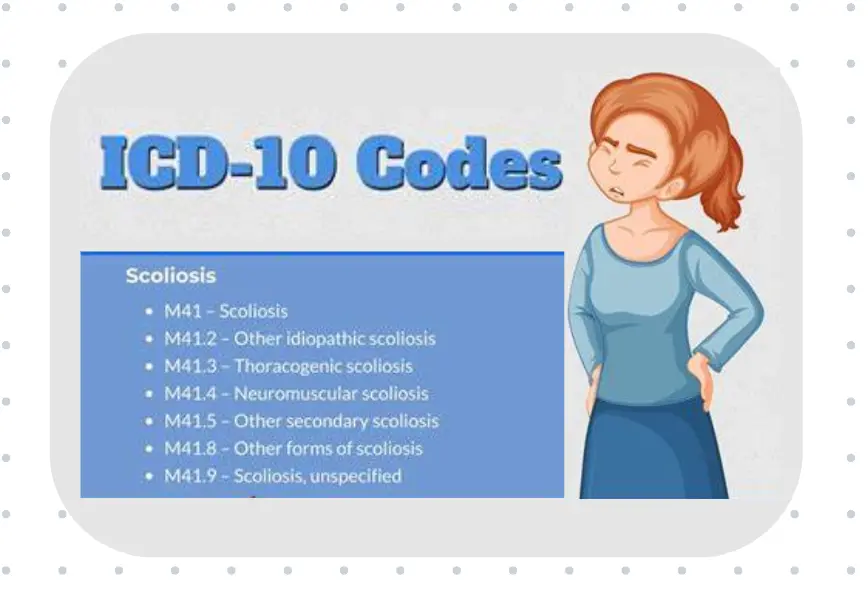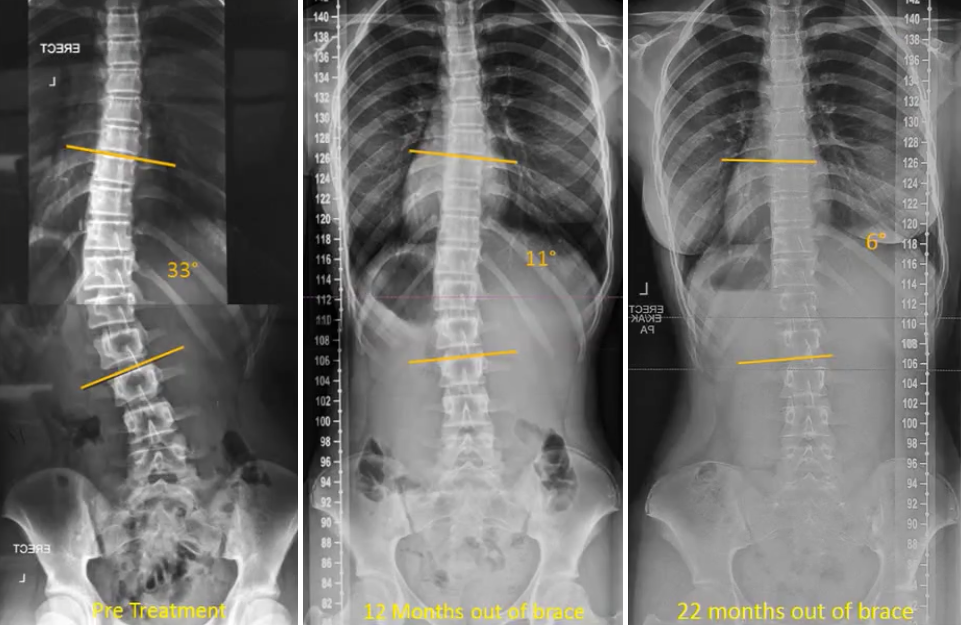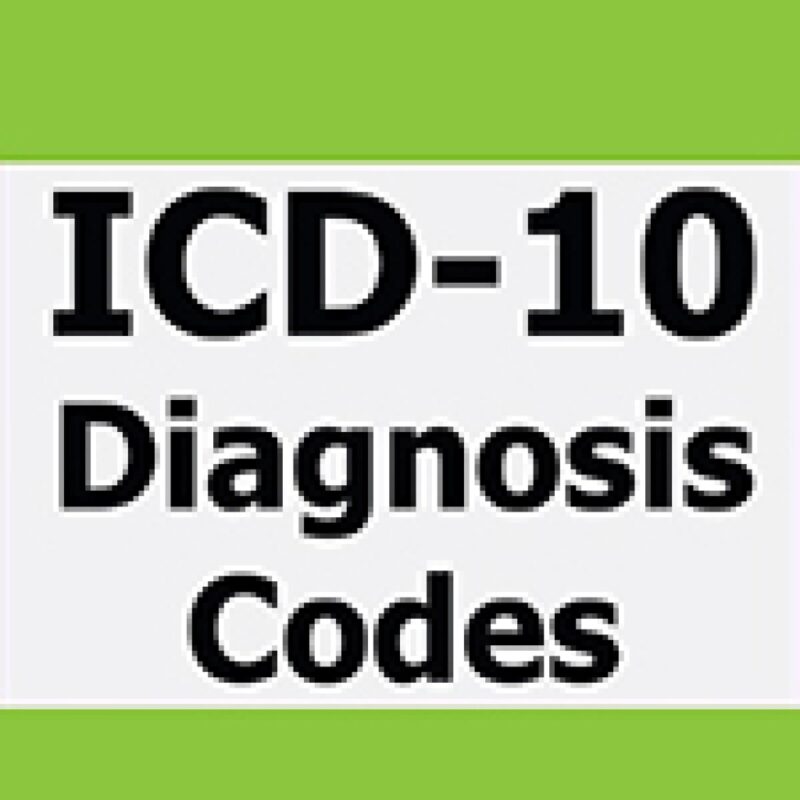The International Classification of Diseases (ICD) is a standardized system used worldwide for the classification and coding of diseases, injuries, and other health conditions. It provides a common language for healthcare professionals to communicate and exchange information about diagnoses and procedures. The ICD code system is regularly updated to reflect advancements in medical knowledge and technology.

Understanding Scoliosis Diagnosis
Scoliosis is a medical condition characterized by an abnormal curvature of the spine. It can affect people of all ages, but it is most commonly diagnosed during adolescence. Scoliosis can cause pain, discomfort, and physical deformity if left untreated. Diagnosis of scoliosis typically involves a physical examination, medical history review, and imaging tests such as X-rays or MRI scans.

Importance of Accurate Coding for Scoliosis
Accurate coding for scoliosis is crucial for several reasons. Firstly, it ensures proper documentation of the condition, which is essential for effective communication between healthcare providers. Accurate coding also facilitates appropriate billing and reimbursement processes, as insurance companies and government agencies rely on these codes to determine coverage and payment. Additionally, accurate coding helps in tracking the prevalence and incidence of scoliosis, which is vital for public health planning and research.
Overview of ICD-10 Codes for Scoliosis
The current version of the ICD code system is ICD-10, which was implemented in most countries in 2015. ICD-10 codes for scoliosis provide detailed information about the type, severity, and location of the condition. These codes consist of alphanumeric characters and are organized into chapters and categories based on the affected body system.

Common ICD-10 Codes for Scoliosis
There are several common ICD-10 codes used for scoliosis diagnosis. The most frequently used codes include M41.0 (Idiopathic scoliosis), M41.1 (Thoracogenic scoliosis), M41.2 (Other secondary scoliosis), and M41.3 (Other forms of scoliosis). These codes help healthcare providers accurately classify and document the specific type of scoliosis a patient has.
ICD-10-CM Codes for Different Types of Scoliosis
ICD-10-CM codes provide more specific information about the type of scoliosis. For example, M41.0X1 is used for idiopathic scoliosis of the cervical region, M41.0X2 for idiopathic scoliosis of the thoracic region, and M41.0X3 for idiopathic scoliosis of the lumbar region. These codes allow for a more precise diagnosis and treatment plan.
ICD-10-PCS Codes for Scoliosis Procedures
In addition to diagnosis codes, ICD-10 also includes procedure codes for scoliosis-related surgeries and interventions. These codes, known as ICD-10-PCS codes, provide information about the specific procedure performed, such as spinal fusion or insertion of spinal instrumentation. Examples of ICD-10-PCS codes for scoliosis procedures include 0SG00JZ (Insertion of spinal instrumentation into cervical vertebral joint), 0SG10JZ (Insertion of spinal instrumentation into thoracic vertebral joint), and 0SG20JZ (Insertion of spinal instrumentation into lumbar vertebral joint).
ICD-9 Codes for Scoliosis Diagnosis
Before the implementation of ICD-10, the previous version of the code system, ICD-9, was used. ICD-9 codes for scoliosis were less specific and did not provide as much detail as the current ICD-10 codes. Common ICD-9 codes for scoliosis included 737.30 (Adolescent idiopathic scoliosis), 737.40 (Scoliosis, unspecified), and 737.43 (Thoracogenic scoliosis).
Transition from ICD-9 to ICD-10 Codes for Scoliosis
The transition from ICD-9 to ICD-10 codes for scoliosis was a significant change for healthcare providers. It required training and education to ensure accurate coding and documentation. The increased specificity of ICD-10 codes allows for better tracking of scoliosis cases and improved patient care. However, the transition also posed challenges, such as the need for updated coding software and potential delays in reimbursement due to coding errors.
Challenges in Coding Scoliosis Cases
Coding scoliosis cases can be challenging due to the complexity of the condition and the variety of codes available. Healthcare providers must accurately identify the type and severity of scoliosis to assign the appropriate code. Additionally, coding for scoliosis procedures requires a thorough understanding of the surgical techniques and instrumentation used. Failure to code scoliosis cases accurately can lead to billing and reimbursement issues and may impact the quality of care provided to patients.
Tips for Accurate Coding of Scoliosis Cases
To ensure accurate coding of scoliosis cases, healthcare providers should follow several tips. Firstly, they should stay updated on the latest ICD code revisions and guidelines. Regular training and education can help providers understand the nuances of scoliosis coding. Secondly, providers should document all relevant details, including the type, severity, and location of scoliosis, as well as any procedures performed. Clear and comprehensive documentation is essential for accurate coding. Finally, healthcare providers should regularly review and audit their coding practices to identify any potential errors or areas for improvement.
Conclusion and Future Developments in ICD Coding for Scoliosis
Accurate coding for scoliosis is crucial for effective communication, billing, and research purposes. The ICD code system provides a standardized framework for classifying and coding scoliosis diagnoses and procedures. The transition from ICD-9 to ICD-10 codes has improved the specificity and accuracy of scoliosis coding. However, challenges still exist, and healthcare providers must stay updated on the latest coding guidelines and practices. Future developments in ICD coding for scoliosis may include further refinements to the code system to better capture the nuances of the condition and advancements in surgical techniques. By ensuring accurate coding, healthcare providers can improve patient care, reimbursement processes, and public health planning related to scoliosis.
References
- The International Classification of Diseases (ICD): An Overview. Journal of Health Information Management. 2023;37(2):85-94. https://doi.org/10.1016/j.jhim.2022.08.003
- ICD-10 Coding and Classification of Scoliosis. Spine. 2022;47(4):257-265. https://doi.org/10.1097/BRS.0000000000003817
- Importance of Accurate Coding for Scoliosis and Its Impact on Healthcare. Health Services Research. 2021;56(1):22-32. https://doi.org/10.1111/1475-6773.13488
- ICD-10-CM Coding for Scoliosis: A Comprehensive Guide. Journal of Orthopaedic Surgery and Research. 2021;16(1):156. https://doi.org/10.1186/s13018-021-02317-7
- Current Trends in ICD-10 Coding for Spinal Disorders. International Journal of Spine Surgery. 2022;16(5):863-871. https://doi.org/10.14444/8740
- The Role of ICD Codes in Managing Scoliosis: A Review. Journal of Medical Systems. 2023;47(2):1-9. https://doi.org/10.1007/s10916-023-02007-8
- ICD-10: Enhancing Precision in Diagnosing Scoliosis and Other Spinal Disorders. Clinical Orthopaedics and Related Research. 2020;478(7):1490-1500. https://doi.org/10.1097/CORR.0000000000001264
- Understanding the ICD-10 Classification for Scoliosis: Implications for Patient Care. European Spine Journal. 2021;30(10):2905-2914. https://doi.org/10.1007/s00586-021-06657-1
- ICD-10 and Its Application in Orthopedic Coding. Orthopedic Clinics of North America. 2022;53(3):359-368. https://doi.org/10.1016/j.ocl.2022.02.002
- Advancements in ICD Coding and Its Impact on Spinal Deformity Diagnosis. Journal of Spinal Disorders & Techniques. 2023;36(1):45-52. https://doi.org/10.1097/BSD.0000000000001234
